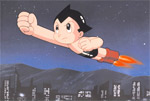David Fuentes
Lesson: Lesson formatted based on the presentation of Dr. Jonathan Abel
Target Level: Grade 10, Grade 11, Grade 12
Subject Area: Media Studies, Technology
Section One: Identifying All Standards And Objectives
Objectives
- Students will be able to demonstrate content knowledge of other cultures in order to help thinking about our place in the world.
- Students will be able to state observations and reflections on differences and similarities in cultural representation and use of media.
- Students will be able to evaluate and critique a media-saturated culture
PA State Standards:
Subject: Arts and Humanities
Area 9.2: Historical and Cultural Context:
Grade/Course: Grade 12
Standard B.: Relate works in the arts to varying styles and genre and to the periods in which they were created.
Standard D.: Analyze a work of art from its historical and cultural perspective.
Standard E.: Analyze how historical events and culture impact forms, techniques and purposes of works in the arts.
Section Two: Identifying Method(S) Of Assessment And Point Of Use Throughout Lesson
Pre-Assessment
Show students a picture like the one found here:
Ask students to tell you as much as they can about the picture.
Formative Assessment
Using the current image on Japanese animation, introduce the notion that students will learn about the evolution of imagery in Japan and begin to think about its impact on media representations today.
Summative Assessment
Students can demonstrate their knowledge of one or more forms of Japanese imagery styles by replicating an image in that style or by writing a report about the place in history that style has come to represent.
Section Three: Identifying The Learning Activities/Instructional Strategies And Details As To How The Lesson Will Be Carried Out
Introduction (Hook)
Select a visual image to show students similar to the one found here:
Ask students to tell you about the picture. Do you recognize the picture? If so, how, or as what? Have you seen others like it? Where?
The picture will be of Japanese animation, a hot topic for many of your students. You can then introduce the idea that you will be studying the evolution of the image in the Japanese context to better understand the history of imagery in Japan and to better understand the role Japanese animation has played in social and visual media today.
Sequence of Instruction (Step 1, Step 2)
Following the hook, students will be asked to interpret four genres of Japanese visual imagery to come up with an interpretation of how each led to the next and how the whole contributed to the evolution of Japanese visual culture.
The lesson is designed based on a backward design. Beginning with the notion of anime, students will work backwards to understand the various genres that led to anime and to understand how those genres may have contributed to the birth and popularity of anime in Japan and worldwide.
Student will be asked to review each of the genres presented in the following website:
The students can be broken into small groups or pairs and asked to arrive at their own interpretation.
The genres — early photography, Kamishibai, anime and web 2.0 — each have characteristics that students can interpret as leading to the next and or contributing in some way to the following genres.
After discussing and documenting the student interpretations’ of each genre, students can choose one to perform an original art work or to write a report on. Both choices would then be presented to the entire class for interpretation and comment/celebration.
Closure/Wrap up
Allow students to celebrate their work by sharing with the entire class and offering their own interpretation.
Transition
Once the hook has generated interest, allowing the students structured time to view the site, create their own interpretations, and creating their final product is essential. The focus of allowing students the time to interpret the history of visual culture on their own and then offering them further insights matches the backward design approach.
Materials (Teacher and Student)
Material resources assembled by Dr. Jonathan Abel
Attachments
Differentiated Instruction (Planning, Teaching and/or Assessment)
Since the lesson is based on student interpretation, it will be important to group students in a way that allows peer learning to take place. Stronger students or students who may have a stronger background with visual culture should be grouped with students who may not feel as comfortable with the topic.
Adjusting the conversation based on the maturity of the class, talk about the challenges to Bachiko of having to move to a new place. Ask them about what they think of moving and what sorts of challenges moving brings—compare moving to another place in the country where you currently live to moving to a new country.
Use of Technology (Where appropriate)
See materials section.
Section Four: Lesson Analysis
- What went well?
- Planning Reflection
- Teaching Reflection
- Student & Evidence
- Improvements
